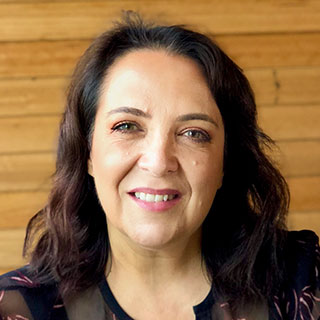Section 1: Biogeography ⟩ Module 1:
How do geological changes on Earth affect living communities?
The first module within Section 1 focuses on articulating student understanding of the geological changes experienced by our planet and how these shaped organisms’ evolutionary history. This understanding links with students prior learning of speciation and prepares them for the introduction of biogeography. It is recommended that this module take around 1 hour of class time.
Summary
VCE Biology (2017-2021)
Unit 4, Area of Study 1, Outcome 1, VCE Biology Study Design
Key knowledge
Changes in biodiversity over time
- Significant changes in life forms in Earth’s geological history including the rise of multicellular organisms, animals on land, the first flowering plants and mammals
- Evidence of biological change over time including from palaeontology (the fossil record, the relative and absolute dating of fossils, types of fossils and steps in fossilisation), biogeography, developmental biology and structural morphology
With a focus on:
- How the study of fossils serves as evidence for continental drift
Duration

Student learning outcomes
On completion of this module, students will:
- Identify major geological changes on Earth and why they were caused
- List some of the evidence for the theory of continental drift
- Understand some of the major evolutionary events that happened for animals
Teacher background information
Module description
This module was designed to prepare students for the topic of biogeography by articulating their understandings of the geological changes experienced by our planet. Biogeography is the study of the spatial and temporal distribution of organisms on Earth.
One of the main challenges for teaching biogeography is to work on students’ perception of time, as the topic often deals with huge time spans that are hard to comprehend. Thus, this module begins by addressing students’ prior knowledge on continental drift, a very important geological change experienced by Earth with relevant implications to living organisms in this planet. Teachers are encouraged to relate the idea of continent drift and speciation, helping students make connections between the concepts. Seeing continental drift as a cause of geographical barriers may help explain the biodiversity seen in our planet today.
This model offers a series of resources that can be used for your personal reference or for your classes, depending on how much your students already know about the subject and how much time you can dedicate to this topic. Also, activities are herein suggested to optimise student learning.
Other Resources
Website
The History of Evolutionary Thought, Biogeography: Wallace and Wegeners
This website is a great source for any topics related to evolution. It explains the most varied aspects of evolution in a concise and scientifically accurate way, making it a good resource from where to obtain all the essential information you need for your teaching. Students may also benefit from this resource. In the specific webpage provided, the history of Wallace and Wegener are explored, explaining the origins of the ideas about continental drift and biogeography. If you are interested in teaching science inspired by historical facts, you may want to use this to engage your students in the topic.
Video
Earth 100 Million Years From Now (3:18)
To illustrate the concept of continental drift, this video shows the movement of the continents in the past millions of years, and also exposes one of the hypotheses for what Earth could look like in the future.
Website
The 10 Oldest Fossils, and What They Say About Evolution
A video from SciShow that points out the difficulty in making discoveries on evolution through analysing fossils and lists some of the key fossil discoveries ever made.
Video
Continental Drift (11:56)
A video telling the story of Wegener and the four main forms of evidence that he used to support the continental drift theory.
Teaching sequence
Lesson 1 Continental drift – Assessing prior knowledge
This lesson was designed to articulate student understandings on continental drift, linking these to their previous knowledge on geographical barriers that cause speciation. Besides assessing prior knowledge, which informs teaching, this lesson aims at softly engaging students into the concept of biogeography as one of the types of evidence of evolution.

Student knowledge/ skills outcome
Students will be able to:
- understand the concept of continental drift and the evidence for geological changes on Earth
- understand how changes on Earth affected organisms’ evolutionary history
Prior Knowledge
- Students should have an understanding of speciation processes and of the genetic makeup of populations
Activities
Activity 1
Geological changes on Earth (10-20 minutes)
Teachers may choose to use either of the following activities to engage students with the topic of continental drift: a whole class discussion or a think-pair-share.
Whole class discussion
If possible, bring a globe to encourage discussion. Point out the resemblance between the borders of Africa and South America and ask students about Pangea. Engaging with student understanding about tectonic plates, discuss how continents might be moving, mentioning the term “continental drift”. This alternative is good for assessing students’ prior knowledge.
Think-pair-share
In pairs, students will engage with the questions while visualizing a world map: Has the world always been like this? How is it changing? Why is Australia a country with an unproportioned number of marsupials, if compared to other countries? Students should conduct independent research and share their findings with their peers. This alternative offers all students the opportunity to contribute to the topic.
Activity 2
Pangaea and Continental drift (10-20 minutes)
With the intention of refreshing students’ memory on geophysics, this activity aims at articulating student understanding on how continental drift may have affected living organisms.
Small group discussion
- Student handout: section1-module1-pangaea-and-contental-drift-student-handout.pdf (1MB pdf)
- Teacher copy: section1-module1-pangaea-and-contental-drift-teacher-copy.pdf (110KB pdf)
Separated into small groups, students engage with the handout provided. Teachers should mediate student discussion while assessing prior knowledge during the activity, making sure students are dedicating a deep level of thought into the questions. For question 5 in the handout, teachers will be required to share an image with students, provided in the teacher copy.
The following resources can also be used to learn more about the theory of continental drift. The videos, specifically, can be a useful resource to share with students and increase their engagement in the subject. Activity 3 is suggested for students who have never learnt about continental drift before, with a series of resources offered by the Nuttfield Foundation.
Activity 3
The Nuttfield Foundation: Continental drift
Teaching about science - Theoretical models: Continental drift (36.7KB pdf)
Activity 4
Connecting Earth’s geological history to evolutionary processes (20 minutes)
With the intention of refreshing students’ memory of geophysics, this activity aims at articulating student understanding on how continental drift may have affected living organisms.
Whole class mind map and discussion
Upon finishing Activity 2, the teacher should make an effort to connect the geological changes on Earth to the evolutionary history of organisms while also addressing the time scale. The first 3:21 min of the video “A Brief History of Geologic Time” can put students into perspective of the time scale, acknowledging our difficulty in perceiving it. After watching the video, the teacher promotes the construction of a mind map with the key ideas of evolution and mass extinction. A word list with some of the concepts may be provided to the students to get them started. (Alternatively, students may construct an annotated timeline of these events). The lesson can be wrapped up with watching the video “Tree of Life”, where David Attenborough narrates some of the major hallmarks in animal evolution throughout history.
Activity 5
Representing the biogeographical distribution of species using Slowmation
Adding to the visualisation of geological events that happened on Earth and how they link to living organisms, this activity challenges students to create a slowmation representing the formation of modern continents and how it contributed to speciation processes and fossil distribution. Besides being a creative activity that incorporates the use of ICT, as it is endorsed by the Curriculum, this exercise may also cater for students with high functioning autism, who benefit from concrete examples to understand abstract concepts. Information on how to develop digital technologies can be found in: http://www.digiexplanations.com/slowmation.html. To optimise student guidance on how to create a slowmation, teachers are encouraged to familiarise themselves with the process and practise using the technology as well.
Next module: What is biogeography?
 Contemporary VCE Biology
Contemporary VCE Biology



